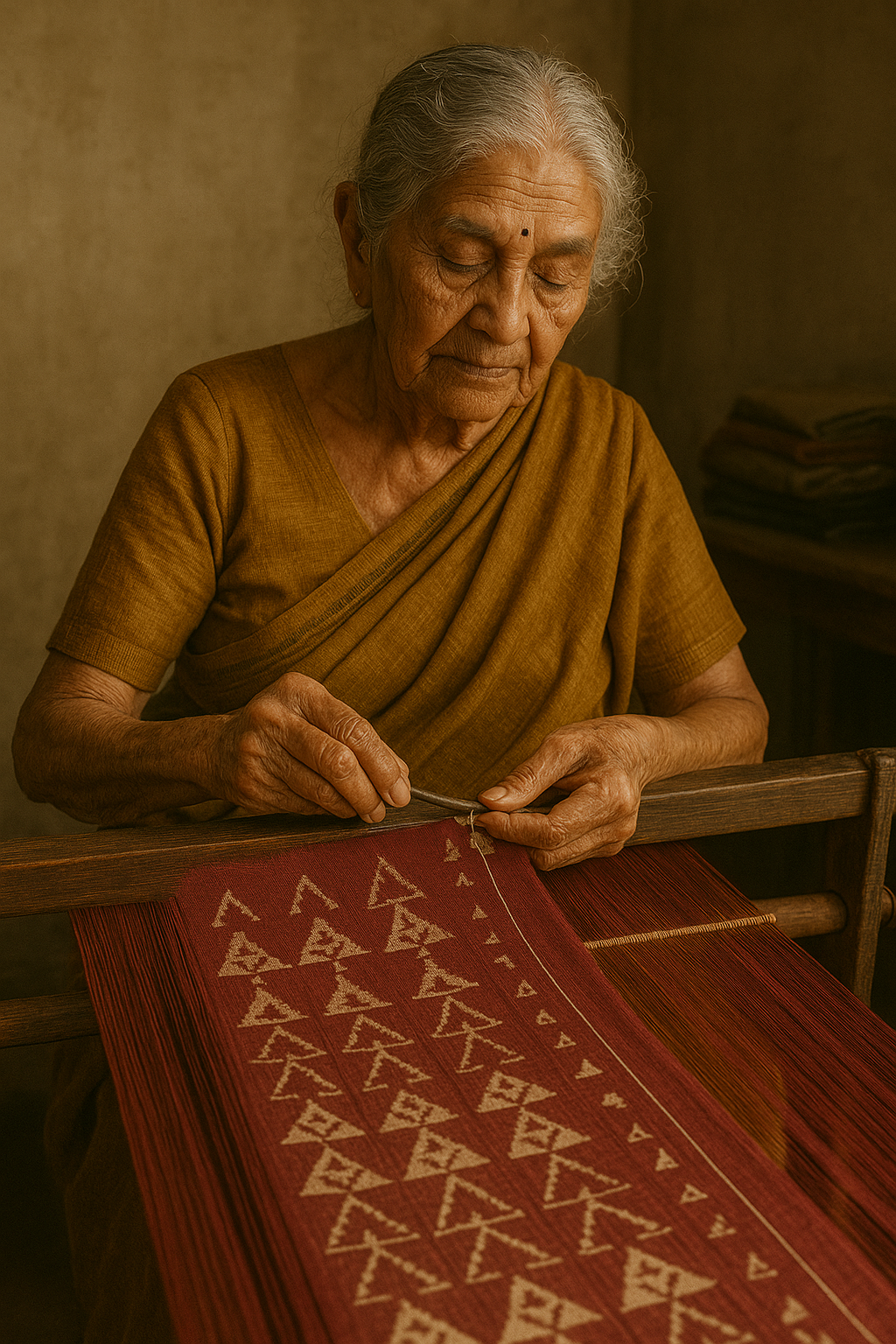
India’s Forgotten Crafts, Remembered at ATK
In a land as diverse and culturally rich as India, art and craft have never been just a means of decoration—they are a reflection of life, tradition, spirituality, and community. For centuries, skilled artisans across the country practiced intricate crafts that were passed down through generations. However, with the rise of industrialization and fast fashion, many of these priceless traditions began to fade away.
But not anymore.
At Atulya Karigari (ATK), we’re not just reviving forgotten Indian crafts—we're reintroducing them to the modern world with pride, purpose, and passion. Every ATK product is more than a piece of art; it’s a bridge between the legacy of the past and the aesthetic of the present.
The Disappearing Legacy
Many of India's traditional crafts—like handloom weaving, block printing, Aari embroidery, and natural dyeing—once flourished in royal courts and common households alike. But the shift toward synthetic materials and machine-made goods caused these time-honored skills to lose relevance.
Thousands of artisans left their ancestral work behind, struggling to find modern buyers for ancient techniques. As a result, many crafts were on the brink of extinction, remembered only in museums or textbooks.
ATK’s Mission: To Remember, Revive, and Reimagine
Atulya Karigari was born out of a simple yet powerful vision:
To bring India’s forgotten crafts back into the hands of the people, not just as heritage showpieces but as functional, fashionable, and sustainable essentials.
We have travelled to rural corners of India, met with artisan clusters, and re-established connections with crafts that were once considered outdated. Our team works side-by-side with artisans, not only to revive these techniques but to innovate them for 21st-century style and comfort.
Crafts Reimagined by ATK
Here’s how ATK is giving new life to India’s fading arts:
1. Handloom Weaving
Handloom fabrics—each woven slowly and skillfully—were once a staple in Indian households. Today, they are a rare find. At ATK, we restore their dignity and demand by offering handwoven sarees, dupattas, and garments that are elegant, breathable, and timeless.
Why it matters: Handloom weaving supports zero-electricity production, encourages local employment, and preserves regional weaving styles like Maheshwari, Chanderi, and Jamdani.
2. Natural Dyeing
With the world turning toward eco-conscious choices, ATK proudly brings back natural dyeing techniques, using turmeric, indigo, madder root, and more. Our colors are not just beautiful—they’re safe for the skin, environment-friendly, and rich in heritage.
Why it matters: Each naturally dyed fabric is unique in tone and texture, showcasing imperfections that only handcrafting can offer.
3. Wooden Block Printing
Using century-old hand-carved wooden blocks, ATK’s artisans stamp motifs onto fabric—some inspired by Mughal florals, others by tribal and folk art. No digital printing here—just pure human craftsmanship.
Why it matters: The small flaws in each block print are what make it truly exclusive and personal—a far cry from mass-produced designs.
4. Aari, Zardozi & Hand Embroidery
From the royal courts of Rajasthan to bridal trousseaus, Aari and Zardozi embroidery are opulent arts that were fading fast. ATK reintroduces these techniques on modern silhouettes—think lightweight kurtas, elegant sarees, and festive dupattas.
Why it matters: This provides women artisans with dignified employment, while letting customers own a piece of royal tradition.
5. Kalamkari – The Art of Storytelling
Kalamkari, a hand-drawn textile art form, was once used to depict epic tales on temple walls and clothing. ATK now brings this art to life on stoles, wall hangings, and sarees, merging mythology with modern design.
Why it matters: It keeps India’s narrative art alive in the age of pixels and prints.
Empowering the Forgotten Hands Behind the Art
At ATK, we believe in artisan-first ethics. This means:
-
Paying fair wages
-
Offering continuous work and skill training
-
Promoting women-led artisan groups
-
Giving credit to the creators
-
Ensuring safe, dignified working conditions
By supporting over 500+ artisans across rural India, ATK doesn’t just make beautiful products—we create beautiful lives.
From Forgotten to Fashionable: Craft Meets Modern Style
One of ATK’s biggest achievements is making these ancient crafts wearable and relatable in today's world. Whether you’re a college student, a working professional, or a wedding guest, there’s a handcrafted piece for every moment.
Our products are not museum pieces—they’re part of your daily fashion, sustainable decor, and conscious living.
Why ATK is Different
In a marketplace flooded with factory-made “ethnic wear,” ATK stands tall by offering:
Authentic Craftsmanship – No shortcuts, no imitations
Eco-Friendly Products – Natural dyes, organic cotton, low carbon impact
Limited Edition Designs – Small batches to maintain uniqueness
Cultural Storytelling – Each piece comes with its own journey
Social Impact – Every purchase uplifts an artisan family
A Revival That Needs You
India’s forgotten crafts can’t survive on nostalgia alone—they need modern patrons who care. That’s where you come in.
Every product you buy from Atulya Karigari is a vote for slow fashion, sustainability, and culture. It’s a small act with big impact.
Conclusion: Where Memory Meets Modernity
Atulya Karigari is more than a brand—it’s a movement of remembrance. We don’t just create products; we curate stories of forgotten crafts, untold skills, and unsung heroes.
In a world that’s moving fast, we invite you to slow down—to value the hand over the machine, the meaningful over the mindless, the forgotten over the famous.
Because some things are too beautiful to be forgotten.
